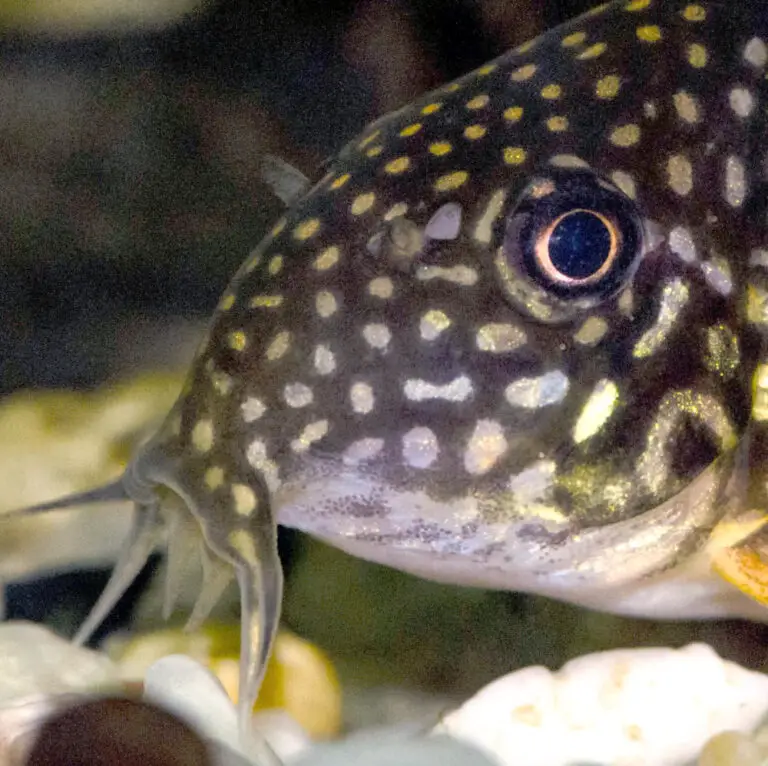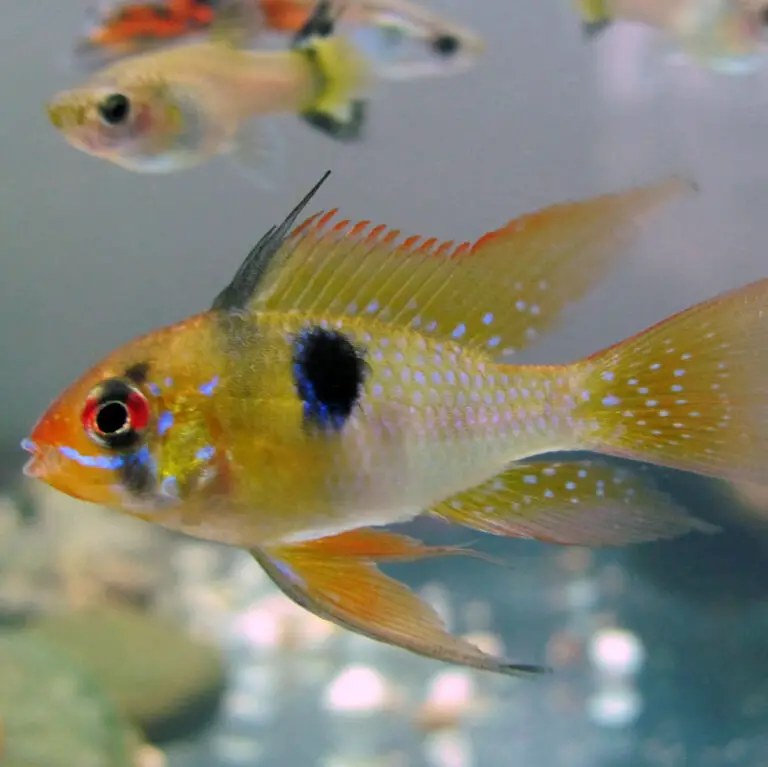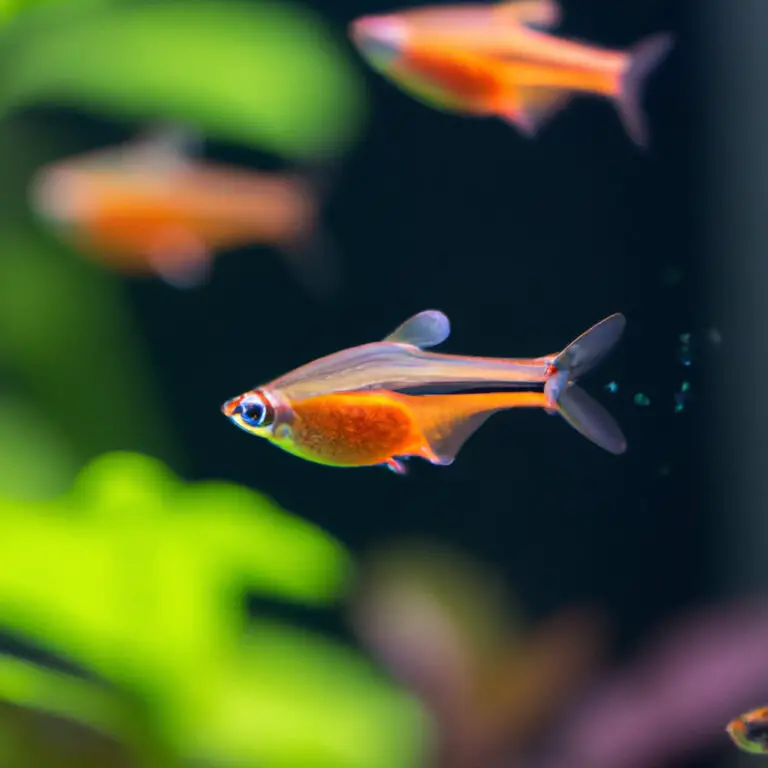The Lawnmower Blenny, also known as Salarias fasciatus, is a popular saltwater fish that is highly valued for its algae-eating abilities and unique appearance. Native to the Western Pacific Ocean, this fish has become a favorite among saltwater aquarium enthusiasts due to its interesting behavior and ease of care. In this article, we will explore the characteristics, behavior, origin, natural habitat, ideal water characteristics, tank mates, care, health, diet, and breeding of the Lawnmower Blenny.
Characteristics
The Lawnmower Blenny is a small fish with a elongated body, measuring around 5 inches in length when fully grown. Its body is adorned with a beautiful combination of mottled brown, black, and white markings, giving it a unique appearance that stands out in any aquarium. One of its most distinctive features is its large eyes, which are positioned on the top of its head, allowing it to look in multiple directions simultaneously.
Their mouth is equipped with a large set of teeth, which they use to rasp algae off of rocks and other surfaces. The teeth continue growing throughout their lifetime, ensuring that they can effectively remove algae from their environment. The Lawnmower Blenny has a single dorsal fin that runs the entire length of its body, and a series of anal, pectoral, and pelvic fins, which it uses for propulsion and maneuvering.
Behavior
The Lawnmower Blenny is a peaceful and relatively docile fish. It is generally not territorial and can be kept in community tanks with other peaceful fish. However, it is important to note that males of this species can become aggressive towards each other if kept in close proximity. In most cases, the aggression is limited to displays and posturing, rather than actual physical harm.
One of the most fascinating behaviors of the Lawnmower Blenny is its constant grazing on algae. Its primary diet consists of different types of algae, which it actively seeks out and consumes. Due to their efficient algae-eating abilities, these fish are often referred to as “living lawnmowers” in the aquarium hobby. They will spend hours each day scraping algae off rocks, glass, and decorations in the tank.
The Lawnmower Blenny is a hardy and adaptable fish that can adapt to different conditions. It is a relatively slow swimmer, preferring to perch on rocks and dart out to browse on algae as needed. While they may spend most of their time near the bottom of the tank, they are known to swim at different levels within the water column, exploring their environment.
Origin
The Lawnmower Blenny is native to the Western Pacific Ocean, including the regions of Australia, Fiji, Tonga, Micronesia, and Papua New Guinea. They are often found near coral reefs and rocky coastal areas, where an abundance of algae provides them with a steady food source. In the wild, they can be observed grazing on rocks, coral, and other surfaces as they scrape off algae using their specialized teeth.
Natural Habitat
In their natural habitat, Lawnmower Blennies are commonly found in shallow, rocky areas with plenty of algae growth. They prefer areas with ample hiding spots, such as crevices and small caves, where they can retreat when feeling threatened. These fish have evolved to live among rocky structures, which provide them with camouflage and protection from predators.
They are commonly found in water that ranges in temperature between 72 to 78 degrees Fahrenheit (22 to 26 degrees Celsius) and with a salinity level of 1.020 to 1.025. The water in their natural habitat is typically clear and has a moderate current, mimicking the conditions in a well-maintained aquarium.
Ideal Water Characteristics
The ideal water characteristics for a Lawnmower Blenny in a home aquarium are as follows:
- Temperature: 72 to 78 degrees Fahrenheit (22 to 26 degrees Celsius)
- Salinity: 1.020 to 1.025
- pH Level: 8.0 to 8.4
- Ammonia, Nitrate, and Nitrite levels should be consistent with a well-maintained saltwater aquarium.
It is important to provide the Lawnmower Blenny with a well-established and maintained aquarium. Proper filtration and regular water changes are essential to maintain water quality. A protein skimmer can also be beneficial in removing excess organic waste from the water.
Additionally, it is recommended to provide moderate water flow in the tank, simulating the natural conditions of the Lawnmower Blenny’s habitat. This can be achieved through the use of powerheads or wavemakers.
Tank Mates
The Lawnmower Blenny is generally peaceful and can be housed with other peaceful fish that are of a similar size. They are not typically aggressive towards other tank mates. However, it is important to note that males of this species can become territorial towards each other, especially if they are in close proximity. If keeping multiple males in the same tank, it is recommended to provide adequate hiding spaces and territories to minimize the potential for aggression.
Ideal tank mates for the Lawnmower Blenny include small to medium-sized saltwater fish, such as clownfish, gobies, jawfish, and blennies. Avoid keeping them with overly aggressive or territorial fish, as they may harass the Lawnmower Blenny. Likewise, avoid housing them with larger predatory fish that may view the Lawnmower Blenny as food.
Invertebrates, such as shrimp and hermit crabs, can also make suitable tank mates for the Lawnmower Blenny. However, it is important to monitor their interaction, as the blenny may nip at their appendages or snatch their food.
Care
Caring for a Lawnmower Blenny is relatively straightforward, as they are hardy and adaptable fish. However, there are a few key considerations to keep in mind to ensure their health and well-being.
1. Tank Size: The minimum recommended tank size for a Lawnmower Blenny is 30 gallons, although a larger tank is preferable. This will provide them with ample swimming space, as well as enough places to hide and explore.
2. Rock Structure: Lawnmower Blennies require plenty of rocks and live rock structures in the aquarium. These structures provide them with hiding spots, territories, and surfaces to graze on. Ensure that the rocks are securely positioned to avoid the risk of them toppling and causing injury to the fish.
3. Hiding Spots: As mentioned earlier, Lawnmower Blennies appreciate hiding spots in the form of rock crevices and small caves. These spots are important for them to retreat to when they feel threatened or stressed. Providing these hiding spots will help them feel more secure in their environment.
4. Algae Growth: It is important to encourage algae growth in the aquarium for the Lawnmower Blenny to feed on. This can be achieved by using live rock, as well as including artificial decorations that have algae growth. Avoid using chemical algae removers, as they can potentially harm the fish.
5. Water Quality: Maintaining good water quality is crucial for the overall health of the Lawnmower Blenny. Regular water changes, proper filtration, and monitoring of water parameters are essential in providing them with a clean and stable environment.
Health, Diseases & Parasites
The Lawnmower Blenny is generally a hardy fish that is not prone to many diseases. However, like all fish, they are susceptible to certain health issues and parasites. Poor water quality, improper diet, and stressful environments can increase the risk of disease. It is important to closely monitor the health of the fish and take appropriate action if any symptoms of illness are observed.
Common health issues that can affect the Lawnmower Blenny include:
- Ich (White Spot Disease): This is a common parasite that can affect almost all saltwater fish. It appears as white spots on the fish’s body and fins. If left untreated, it can cause severe health problems and even death. Treatment options include using medications specifically designed to treat ich or raising the temperature of the water to speed up the parasite’s life cycle.
- Fin Rot: Poor water quality and stress can lead to fin rot, which is characterized by the fraying or discoloration of the fish’s fins. Maintaining good water quality and providing a stress-free environment is essential to prevent fin rot.
- Velvet: Velvet is a parasitic skin disease that appears as a fine, gold or rust-colored dust on the fish’s body. Infected fish may exhibit symptoms such as loss of appetite, rapid breathing, and flashing against objects. Treatment involves raising the temperature of the water and using medication specifically designed to treat velvet.
Preventing disease in the Lawnmower Blenny involves maintaining proper water quality, providing a balanced diet, and reducing stress in the tank. Quarantining new fish before introducing them into the main tank can also help prevent the spread of diseases.
Diet and Feeding
The Lawnmower Blenny is primarily an herbivorous fish that feeds on different types of algae. In the wild, they spend a significant portion of their day scraping and consuming algae from rocks, coral, and other surfaces. In a home aquarium, it is important to provide them with a similar diet to ensure their nutritional needs are met.
Feeding the Lawnmower Blenny can be achieved using a combination of natural and prepared foods. Here are some suitable options:
- Algae: The Lawnmower Blenny will readily consume different types of algae, including filamentous green algae, hair algae, and diatoms. Encouraging the growth of these algae in the tank will provide them with a natural food source. You can also manually supplement their diet with a small piece of nori or spirulina-based food.
- Prepared Foods: In addition to algae, Lawnmower Blennies can be fed with various types of prepared foods, such as flake or pellet foods formulated specifically for herbivorous fish. These foods should be high in vegetable matter and contain a variety of nutrients and vitamins.
- Frozen and Live Foods: Supplementing their diet with frozen or live foods can provide additional nutrients and variety. Foods such as brine shrimp, mysis shrimp, and finely chopped seafood can be offered occasionally.
It is important to feed the Lawnmower Blenny small portions multiple times a day rather than one large meal. This will ensure that they have a continuous source of food and prevent overeating. Monitor their eating habits and adjust the amount of food accordingly to prevent obesity and maintain a healthy weight.
Breeding
The breeding behavior of the Lawnmower Blenny is not well-documented, and captive breeding is relatively rare. In the wild, they are known to be egg-layers, with males cleaning and guarding a nest site on the substrate or in a small crevice.
Successful breeding of the Lawnmower Blenny in captivity requires careful planning and a well-established aquarium. Providing suitable conditions, such as high water quality, abundant food supply, and appropriate tank mates, can increase the likelihood of breeding.
If breeding is successful, the female will lay eggs, which the male will fertilize and then guard until they hatch. The eggs typically hatch after a few days, and the fry will begin to swim and feed on small planktonic organisms. Raising the fry can be challenging and requires specialized knowledge and care.
Due to the rarity of captive breeding, most Lawnmower Blennies available in the aquarium trade are wild-caught specimens. It is important to support sustainable fish sources and avoid purchasing fish captured from vulnerable or fragile ecosystems.
Images
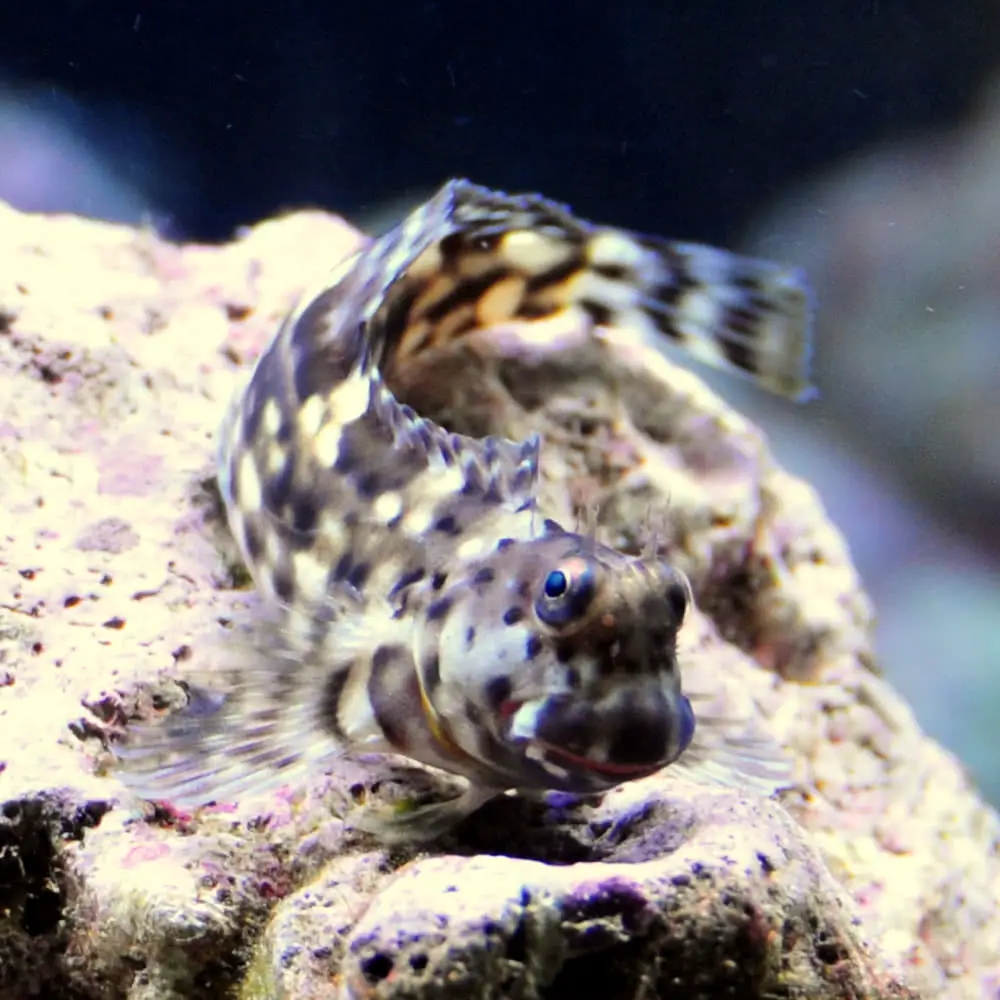
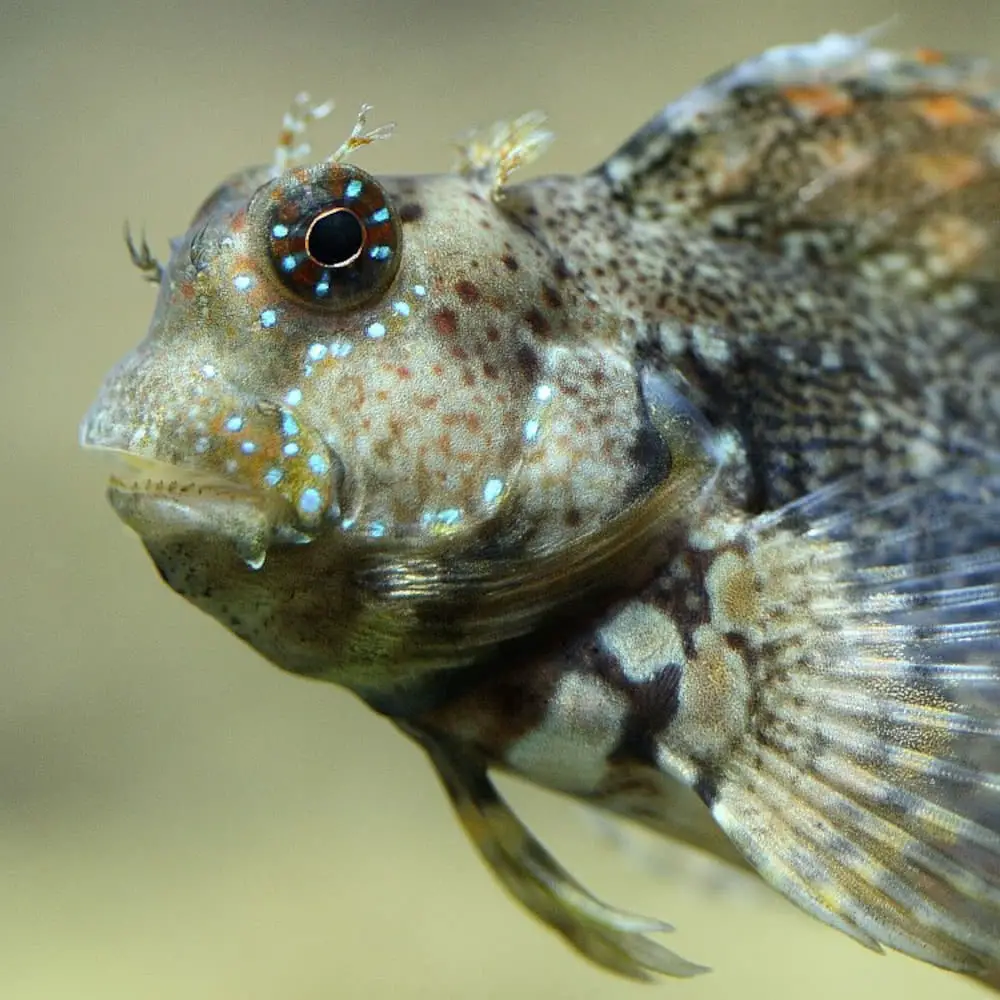
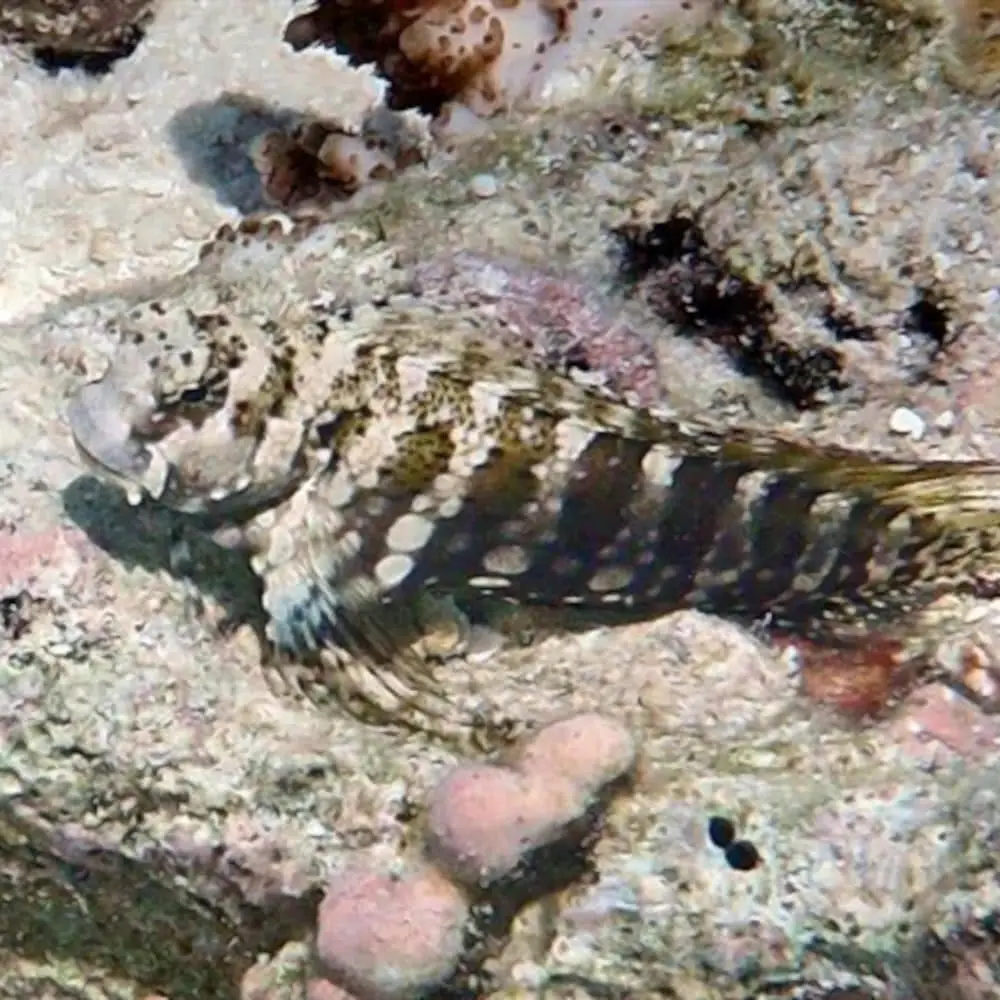
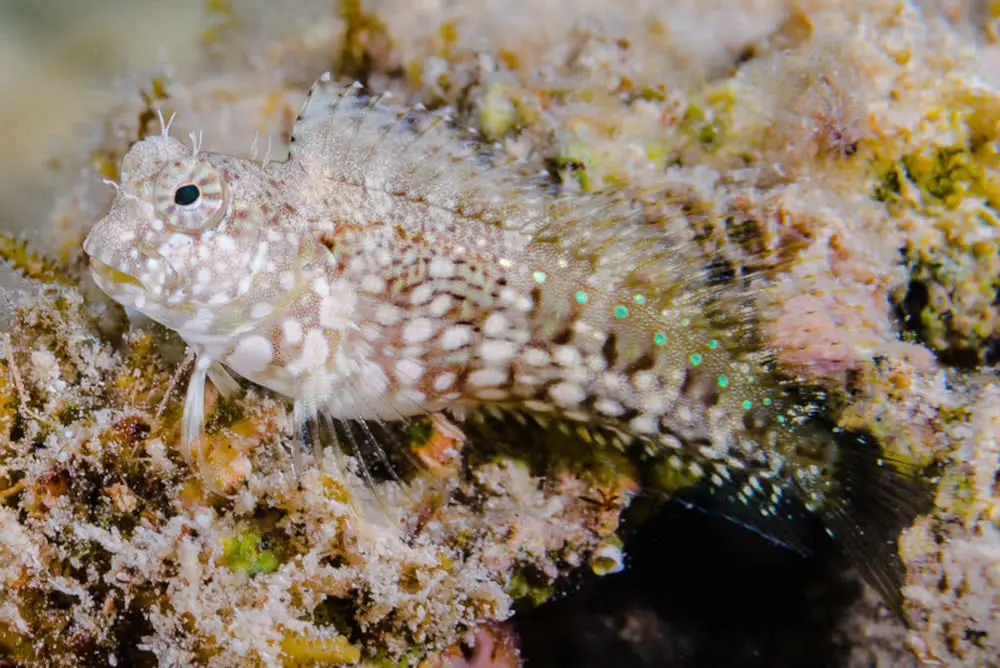
F.A.Q.
What is a Lawnmower Blenny?
A Lawnmower Blenny, or Salarias fasciatus, is a type of fish that belongs to the family Blenniidae. It is commonly found in the Indo-Pacific region and is known for its ability to graze on algae.
How big do Lawnmower Blennies grow?
Lawnmower Blennies can grow up to 5-6 inches in size.
What is the lifespan of a Lawnmower Blenny?
The average lifespan of a Lawnmower Blenny is around 5-8 years, but with proper care, they can live even longer.
What should I feed my Lawnmower Blenny?
Lawnmower Blennies are herbivores, so their diet should consist mainly of algae. You can provide them with seaweed sheets or other types of algae-based foods. It is also important to supplement their diet with live or frozen foods, such as brine shrimp or mysis shrimp, to ensure they receive a well-rounded diet.
Can Lawnmower Blennies be kept in a reef tank?
Yes, Lawnmower Blennies can be kept in a reef tank. However, they may nip at some types of corals and invertebrates, so it is important to choose tank mates carefully and monitor their behavior closely.
Do Lawnmower Blennies jump out of the tank?
Lawnmower Blennies have been known to jump out of open tanks, especially if they feel stressed or threatened. It is recommended to keep a tight-fitting lid or mesh cover on the tank to prevent them from escaping.
Can Lawnmower Blennies be kept in a community tank?
Yes, they can be kept in a community tank with other peaceful fish species. However, it is important to provide enough hiding places and territory for each fish to reduce the chances of aggression.
Do Lawnmower Blennies require a specific water temperature?
Lawnmower Blennies prefer a water temperature range of 72-78°F (22-26°C).
What is the ideal pH level for a Lawnmower Blenny?
The ideal pH level for a Lawnmower Blenny is between 8.1 and 8.4.
Do Lawnmower Blennies require a specific lighting setup?
Lawnmower Blennies do not have any specific lighting requirements. However, it is recommended to provide a well-lit tank with some shaded areas for them to hide in.
How often should I clean the tank for my Lawnmower Blenny?
Regular tank maintenance is important for the health of your Lawnmower Blenny. You should perform regular water changes, clean the substrate, and remove any excess algae or debris from the tank at least once a week.
Can I keep multiple Lawnmower Blennies in the same tank?
While it is possible to keep multiple Lawnmower Blennies in the same tank, it is important to provide enough space and hiding places for each fish. They can be territorial and may exhibit aggressive behavior towards each other if they feel crowded.
Should I provide a specific type of substrate for my Lawnmower Blenny?
Lawnmower Blennies do not have any specific substrate requirements. However, a substrate with a sandy or gravel-like texture is recommended, as it closely mimics their natural habitat.
How can I create hiding places for my Lawnmower Blenny?
You can create hiding places for your Lawnmower Blenny by using live rocks, PVC pipes, or other aquarium decorations. It is important to provide them with plenty of hiding places to reduce stress and aggression.
Can Lawnmower Blennies be kept with other blenny species?
It is generally not recommended to keep Lawnmower Blennies with other blenny species, as they may exhibit aggressive behavior towards each other. It is best to keep them with peaceful tank mates.
Do Lawnmower Blennies require a quarantine period?
It is always a good idea to quarantine any new fish before introducing them to your main tank. This helps prevent the introduction of diseases or parasites to your existing fish population.
What are some signs of a healthy Lawnmower Blenny?
A healthy Lawnmower Blenny will have a vibrant coloration, clear eyes, and an active swimming behavior. They should also have a healthy appetite and show interest in their surroundings.
What are some common health issues for Lawnmower Blennies?
Some common health issues for Lawnmower Blennies include ich (white spot disease), marine velvet, and bacterial infections. It is important to monitor their behavior and appearance regularly and seek appropriate treatment if needed.
How can I prevent ich in my Lawnmower Blenny?
To prevent ich in your Lawnmower Blenny, it is important to maintain proper water quality, provide a well-balanced diet, and quarantine any new fish before introducing them to your main tank. It is also recommended to avoid sudden changes in temperature or salinity.
Can I keep a Lawnmower Blenny in a freshwater aquarium?
No, Lawnmower Blennies are saltwater fish and require specific water parameters found in marine aquariums.
Can I hand-feed my Lawnmower Blenny?
Yes, Lawnmower Blennies can be hand-fed. This can help build trust and strengthen the bond between you and your fish. However, it is important to avoid overfeeding and maintain a balanced diet.
Do Lawnmower Blennies have any specific breeding requirements?
Lawnmower Blennies are known to breed in captivity, but they have specific requirements for successful breeding. This includes providing a well-established aquarium with plenty of hiding places and a stable environment.
Can Lawnmower Blennies change their gender?
Yes, some species of blennies, including the Lawnmower Blenny, have the ability to change their gender. This is known as sequential hermaphroditism, where individuals start as one gender and then transition to the opposite gender later in their life.
Are Lawnmower Blennies reef-safe?
Lawnmower Blennies are generally considered reef-safe. However, they may nip at some types of corals or invertebrates, so it is important to choose tank mates carefully and monitor their behavior closely.
Do Lawnmower Blennies require a specific tank size?
Lawnmower Blennies can be kept in a tank with a minimum size of 30 gallons. However, it is always better to provide a larger tank to accommodate their active swimming behavior and territorial nature.
Do Lawnmower Blennies require a specific water flow in the tank?
Lawnmower Blennies prefer moderate water flow in the tank. It is important to provide enough circulation to maintain proper oxygen levels, but avoid strong currents that can stress them.
Can I keep a Lawnmower Blenny in a nano reef tank?
Lawnmower Blennies can be kept in a nano reef tank, as long as the tank meets their basic requirements in terms of water quality, tank size, and hiding places.
Can I keep a Lawnmower Blenny in a fish-only tank?
Yes, you can keep a Lawnmower Blenny in a fish-only tank. However, it is always recommended to provide a well-established and well-maintained tank to ensure the health and well-being of your fish.
What is the recommended salinity level for a Lawnmower Blenny?
The recommended salinity level for a Lawnmower Blenny is between 1.020 and 1.025.
Can I keep a Lawnmower Blenny with other algae-eating fish?
Yes, Lawnmower Blennies can be kept with other algae-eating fish, such as Tangs or Rabbitfish. However, it is important to provide enough space and food for each fish to avoid competition and aggression.
Can Lawnmower Blennies be kept in pairs?
While Lawnmower Blennies can be kept in pairs, they can also exhibit territorial behavior towards each other. It is important to provide enough hiding places and territory for each fish to reduce aggression.
Do Lawnmower Blennies require a specific water filtration system?
Lawnmower Blennies do not have any specific water filtration system requirements. However, it is important to provide a well-maintained filtration system that can handle the waste produced by your fish.
Can I keep a Lawnmower Blenny with other blenny species?
While it is generally not recommended to keep Lawnmower Blennies with other blenny species, some blenny species, such as the Midas Blenny or the Bicolor Blenny, can sometimes be compatible. However, it is important to monitor their behavior closely and provide enough space and hiding places for each fish.
Do Lawnmower Blennies have any predators?
Lawnmower Blennies have natural predators in the wild, including larger fish species and some types of crustaceans. In captivity, they are generally safe from predators if kept in appropriate tank conditions.
Are Lawnmower Blennies nocturnal?
Lawnmower Blennies are primarily diurnal, which means they are active during the day. However, they may become more active during the evening or night in a dimly lit tank.
Do Lawnmower Blennies require any specific water chemistry?
Lawnmower Blennies prefer stable water chemistry with appropriate levels of nitrate, nitrite, and ammonia. It is important to regularly monitor these parameters and make adjustments if necessary.
Can I keep a Lawnmower Blenny with aggressive fish?
It is not recommended to keep Lawnmower Blennies with aggressive fish, as they are relatively peaceful and can become easily stressed or injured. It is best to choose tank mates that are known to be compatible with the gentle nature of the Lawnmower Blenny.
Can I keep a Lawnmower Blenny in a fish-only with live rock (FOWLR) tank?
Yes, Lawnmower Blennies can be kept in a fish-only with live rock (FOWLR) tank. The live rock provides natural hiding places, filtration, and food sources for the blenny.
Can I keep a Lawnmower Blenny in a pico reef tank?
Lawnmower Blennies require a tank size of at least 30 gallons, so it is not recommended to keep them in a pico reef tank, which typically has a capacity of 5 gallons or less.
Can I keep a Lawnmower Blenny with seahorses?
It is generally not recommended to keep Lawnmower Blennies with seahorses. Lawnmower Blennies can sometimes exhibit aggressive behavior, and their active swimming behavior may stress seahorses.
Can I keep a Lawnmower Blenny in a brackish water tank?
No, Lawnmower Blennies are marine fish and require specific water parameters found in saltwater aquariums.
Can I keep a Lawnmower Blenny with a Mandarin Goby?
It is not recommended to keep Lawnmower Blennies with Mandarin Gobies. Both species have specific dietary requirements and may compete for food sources.
Can Lawnmower Blennies jump out of a tank with a mesh cover?
While a mesh cover can reduce the chances of a Lawnmower Blenny jumping out of the tank, it is still possible for them to jump through small gaps or holes in the cover. It is best to use a tight-fitting lid or cover to prevent any possible escape.
Can I keep a Lawnmower Blenny with coral-eating fish?
It is generally not recommended to keep Lawnmower Blennies with coral-eating fish, as they may exhibit aggressive or territorial behavior towards each other. It is best to choose tank mates that are known to be compatible with the peaceful nature of the Lawnmower Blenny.
Can I keep a Lawnmower Blenny in a cold water tank?
No, Lawnmower Blennies are tropical fish and require a water temperature range of 72-78°F (22-26°C).
Can I keep a Lawnmower Blenny in a shallow tank?
While Lawnmower Blennies can adapt to different tank depths, they generally prefer a tank with a moderate depth that allows them enough swimming space and hiding places. A shallow tank may restrict their natural behaviors.
Can I keep a Lawnmower Blenny in a tank with an anemone?
It is generally not recommended to keep Lawnmower Blennies in a tank with anemones. Anemones can sting and potentially harm the blenny, and the blenny may disrupt the anemone’s natural behavior.
Can I keep a Lawnmower Blenny in a tank with aggressive crabs or shrimp?
It is not recommended to keep Lawnmower Blennies with aggressive crabs or shrimp species, as they may exhibit territorial behavior towards each other. It is best to choose tank mates that are known to be compatible with the peaceful nature of the Lawnmower Blenny.
Can I keep a Lawnmower Blenny with a Flame Angelfish?
It is generally not recommended to keep Lawnmower Blennies with Flame Angelfish. Flame Angelfish can be aggressive and may harass or injure the blenny. It is best to choose tank mates that are known to be compatible with the gentle nature of the Lawnmower Blenny.
Can I keep a Lawnmower Blenny in a tank with a Lionfish?
No, it is not recommended to keep Lawnmower Blennies with Lionfish. Lionfish are predatory fish that may harass or even consume the blenny. It is best to choose tank mates that are known to be compatible with the gentle nature of the Lawnmower Blenny.
Can I keep a Lawnmower Blenny with a Hawkfish?
It is generally not recommended to keep Lawnmower Blennies with Hawkfish. Some Hawkfish species are known to be aggressive and may harass or injure the blenny. It is best to choose tank mates that are known to be compatible with the gentle nature of the Lawnmower Blenny.
Can I keep a Lawnmower Blenny with a Triggerfish?
No, it is not recommended to keep Lawnmower Blennies with Triggerfish. Triggerfish are aggressive and may harass or injure the blenny. It is best to choose tank mates that are known to be compatible with the gentle nature of the Lawnmower Blenny.
Can I keep a Lawnmower Blenny with a Clownfish?
Yes, Lawnmower Blennies can be kept with Clownfish. However, it is important to choose tank mates carefully and monitor their behavior closely to ensure compatibility.
Conclusion
The Lawnmower Blenny, with its characteristic appearance and algae-eating abilities, is a popular fish in the saltwater aquarium hobby. Its unique behaviors, adaptability, and ease of care make it an attractive choice for both beginner and experienced aquarists. By providing a suitable tank environment, proper nutrition, and regular maintenance, you can enjoy the company of these fascinating fish in your own home aquarium.

